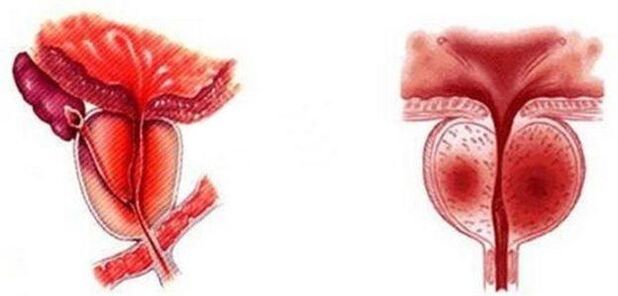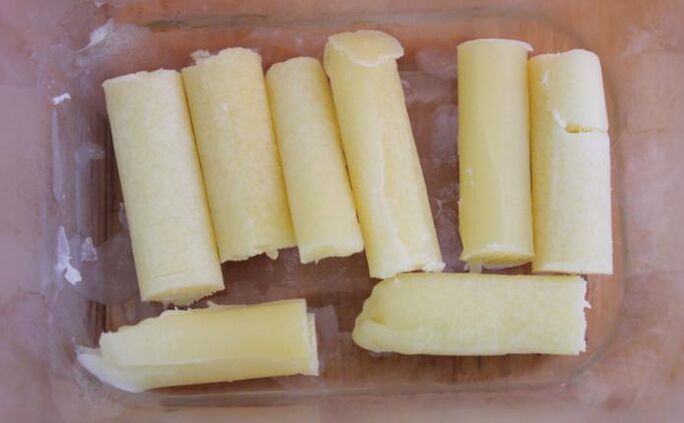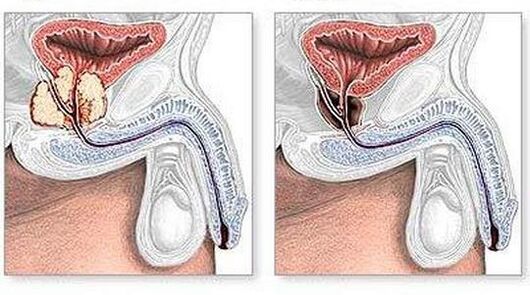
Chronic prostatitis (MKB-10.N41.1 code) is called the inflammatory process and has been observed in prostate tissue for more than three months.It is characterized by, in almost 70% of all cases, it has no symptoms.Only 15% of patients complain about the manifestations of the disease.All other male symptoms only partially indicate the development of prostatitis and are often exposed to other diseases.So when any signs appear, see your doctor after the exam, which will tell you how to treat chronic prostatitis, which is so important.
The particularity of the disease
Chronic prostatitis can not only be diagnosed in the elderly.Young and middle-aged people are also affected by the disease.Those who live a sedentary lifestyle, stick to sexual desire, or experience physical fatigue in the perineum are at risk.That said, drivers are much more likely to have chronic prostatitis than everyone else.
Of all diseases of the male reproductive system, chronic prostatitis accounts for the first place in the prevalence, followed by cancer and benign hyperplasia of the prostate gland of DGPG (prostate adenoma).About every third person faces inflammation of the prostate, one in five of whom suffers from chronic disease.
In most cases, chronic prostatitis is caused by infection and the spread of the genital and reproductive system.Less, this is caused by an inflammatory process associated with changes in the hormonal background of men.
Classification
Similar to other inflammatory diseases, chronic prostatitis may have acute and chronic stages.Its classification is based on the following functions:
- White blood cells in the urine exist.
- There are pathogenic bacteria in the urine, ejaculation, or secrets of glands.
According to the classification, the following types of diseases exist:
- Asymptomatic inflammatory prostatitis is characterized by a lack of chronic prostatitis symptoms.When a patient speaks to a doctor with any other disease, it can be recognized by chance.
- Acute bacterial prostatitis.The patient suffers from acute inflammation of prostate tissue and the presence of pathogens in the urine, which can lead to the development of temperature rise and in vivo poisoning.
- Chronic bacterial prostatitis.Doctors notice typical signs of chronic inflammation.In the analysis of urine and secrets, high levels of white blood cells and bacteria were detected.
- Chronic Pain Syndrome in the Pelvic.Since no bacteria were detected, this pain was considered to be a major symptom.To diagnose chronic prostatitis, syndrome should be observed in men for at least 3 months.
Causes of the disease
The main cause of chronic prostatitis is the infiltration of pathogens (entecococcus, intestines or prayer sticks, etc.) into the prostate, etc.).To remove the prostate, bacteria can be used in three ways:
- Through the urethra.
- Through blood.
- Passing the lymph.
According to statistics, 90% of chronic prostatitis cases are the result of complications of acute prostatitis or urethritis.
In addition to entering the bacterial prostate, the causes of chronic prostatitis are as follows:
- Sexual infection (STPP): herpes, caterpillars, gonococcal, chlamydia, etc.
- The stagnation process in the pelvic area may cause inflammation of the prostate.
- Reduce immunity.This may lead to: vitamin deficiency, hormone balance violation, hypothermia, allergic reactions, obvious physical and emotional stress, uninfected infections, and more.
- A sedentary lifestyle.
- Light.
- Irregular sex life or illness in the intimate field.
- Crot's foot was injured.
- Wearing narrow linen.
- Irrational nutrition (dominates the diet of spicy food).
- Urination lining.
- Violating the chair.
All of this can lead to circulatory diseases in the pelvic area, leading to stagnation and the development of inflammatory processes.The consequences of lack of treatment are infertility and positivity.
Symptoms of the disease
The signs of chronic prostatitis may vary greatly.In most cases, patients complain:
- Reduce performance.
- Fast fatigue.
- Increased worries.
- anxiety.
- Violating sleep.
- lethargy.
- Loss of appetite.
- Increase sweating.
Among the local symptoms:
- Urination disorder.The patient feels frequent impulses and pain at the beginning and end of urination.
- Painful pain can succumb to the groin, ac bone, scrotum, sub-dance bone or rectum.
- Sexual pain.
- Exhausted under tension in the pelvic muscles.
Unlike the acute stage, in chronic diseases, invasive functions often occur.This is related to the fact that stagnation is also an inflammatory process that affects the nerve endings that provide pulses to the brain.As a result, it may be breached, weakened or ejaculated (premature ejaculation), and the sensation during orgasm (eliminated orgasm) is blunt.This symptom of chronic prostatitis in men leads to fear of proximity and irritability, and therefore, sexual neurosis develops.
Treating chronic prostatitis is not easy.How long it takes to take the medication depends on the degree of pathology and the duration of the disease development.It is important to remember that if the symptoms of the disease go away, it does not mean that it will eventually be cured.Severe consequences of chronic prostatitis include gland scarring.This process can be switched to the urethra.
diagnosis
When he goes to the doctor, he asks the patient about available symptoms.Pay special attention to the frequency and nature of pain, impaired urination, and sexual dysfunction.However, because chronic prostatitis can occur without any manifestations, certain studies are necessary:
- Clinical and bacterial analysis of determining the amount of leukocytes and the presence of pathogenic microorganisms.
- Analysis of secrets that may contain bacteria.
- The presence of leukocytes in the amount of leukocytes is determined from the mucosa, macrophages and amyloid.
- Clear ultrasound can identify the perinuclear cells of chronic prostatitis and determine the prostate condition.
A high-quality diagnosis is an important part of correct treatment because it distinguishes chronic prostatitis from other pathology with similar symptoms.
treat
The disease should have a comprehensive treatment.In this case, the patient needs to receive long-term treatment.The treatment plan for chronic prostatitis will be for each patient's individual.Usually, patients do not need to be hospitalized and can receive treatment at home.A completely different question is when the acute stage of the disease or when it is exacerbated in the context of chronic inflammation of the prostate will be treated.In the hospital, antibacterial treatment was used and antitoxin was performed.If necessary, operation is required.
Drug Therapy
To fully treat chronic prostatitis, a prescription drug for men is designed to eliminate infection, normalization of blood circulation and hormone levels.To do this, please use:
- antibiotic.
- Anti-inflammatory non-replacement drugs.
- Anticholinergic agent.
- Immunomodulator.
- Vascular protectant.
- Vasodilator.
The doctor will analyze the pathogen before making an appointment.If the disease is not the origin of the bacteria, the antibiotic treatment process will be short.If the type of pathological flora cannot be determined by laboratory methods, histological analysis of prostate tissue is used.
As the disease recurs, antibacterial treatment was prescribed for prevention purposes.To this end, a drug was used, which was used during treatment but at a low dose.
Experts know what chronic prostatitis is and what causes its development and will pay attention to the pressure inside the prostate and its ability to reduce it.If this function is reduced, stagnation and inflammation of the prostate may occur in the pelvis.Alpha blockers are specified to normalize intrauterine stress.
You can avoid the pain of injection and take pills with candles.
For complaints of rapid and painful urination, NSAIDs are used in combination with alpha blockers.
In the case of taking antibiotics, it turns out to be ineffective and symptoms such as soreness and urination are retained, adjust the treatment so that it is directed:
- Eliminate pain.To do this, use tricyclic antidepressants.
- Normalization of urination.Prescribed treatment after urodynamic analysis.With ADHD in the sphincter, antihistamines, tricyclic antidepressants and bladder are rinsed with antibacterial solutions.Due to the ineffectiveness of this treatment, neuromodulation and physical therapy are used.
Non-drug methods
To make tablet treatment more effective, doctors may recommend physical therapy (electrophoresis, laser treatment, treatment with mud) and transrectal hyperthermia treatment, taking into account existing changes in prostate tissue and tissues of related diseases.When exposed to a temperature of 40 degrees, cellular immunity is activated.When exposed to a temperature of 45 degrees, inhibition of nerve ends occurs, which helps stop pain.The use of laser therapy has a biostimulating effect.
In the absence of contraindications, the patient is performed by the prostate.Usually, patients prescribe psychotherapy and special exercise processes that can strengthen the muscles of the perineum.
Therapy for folk therapy
In addition to using drugs, the symptoms of chronic prostatitis were also treated through folk methods.This treatment can increase immunity and relieve pain.To this end, herbal preparations, soaking and liquefaction agents, bathing, etc. are also used.
The treatment process for botanical surgery is at least 1 month and should be prescribed by a doctor because some of them may have contraindications.Suggestions for folk methods:
- Lots of drinks (tea with linden, rose hips, raspberries).
- Every day before the meal, you need to drink 1 cup of fresh carrots, pears, and cucumber juice.
- If the patient suffers from pain, use a needle bath at a temperature of 37 degrees.The duration of the process is 20 minutes.
- If the patient is not allergic to honey, it is recommended that he eat up to 100 grams of product every day.
- At home, you can make suppositories independently based on propolis or honey.You need to place them within 1 month.To prepare candles with propolis, proportion the mixture of glycerin, gelatin and water to 5:1:2.Add propolis there and dispense the mixture on parchment paper.Keep everything in the refrigerator where the suppository is completely frozen.
- Before going to bed, it is recommended to use Wormwood for enema.To do this, 1 teaspoon of dried plants is brewed with 1 liter of boiling water.

Treatment of pumpkin seeds, aloe juice, parsley, chestnuts and broccoli are also considered effective.Parsley has anti-inflammatory properties and can restore sexual function.Fitotherapists recommends using this plant to treat:
- Drink 1 tablespoon of parsley juice every day before meals.
- Pour 4 teaspoons of plant seeds into 250 ml of boiling water and stick to the thermos.The next day, they drank 1 tablespoon of injection per hour.
- Pour 100 grams of the broken roots of the plant into 1 liter of water and boil over a slow heat for 10 minutes.Drink soup during the day.
An effective tool is pumpkin seeds.About 30 of these seeds contain daily zinc doses, which are necessary for men's health.For treatments, you can make such tools.Crush 500g of pumpkin seeds in a meat mill and mix with 200g of natural honey.The balls are made of the mass produced (the size of the walnut).You need to eat 2 such balls every day.
Propolis helps to enhance the body's defense and relieve inflammation.You can buy its tin agent at a pharmacy.For treatment, you need to drink a glass of milk a day and drink a cup with 1 teaspoon of this tin agent.
In addition, the treatment is done using licorice, St. John's wort, and Echinacea soup, and also in the absence of obvious symptoms.
Surgery
Usually, chronic prostatitis does not show symptoms, patients seek medical help when severe prostate changes occur, and chronic prostatitis is powerless.In addition, this complication can pose a threat to the patient's health.An example of complications is called prostate sclerosis.
Because young people often reveal this complication, doctors are using minimally invasive surgery.The indications of its use are: caterpillosis, involuntary urine release, or, conversely, delayed, prostate abscess, significant increase in size glands, urethra blockade or bleeding.There are some types of surgical interventions for chronic inflammation:
- Circumcision - Used when a patient suffers from caterpillaria.During the operation, the foreskin is dissected.
- A prostatectomy is a fundamental procedure in which the prostate is completely removed.If a malignant tumor is suspected, proceed.
- In the case of its sclerotic changes, prostatectomy is a partial resection of the gland.
- Eliminate adhesions.
- Drainage of cysts or abscess.It is produced by endoscopy.For drainage, use a special tube with a camera.This device is introduced into the cavity of the urethra and can control the operation process.
- In cases of complaints about various sexual diseases (violating orgasm, lung pain, etc.), the patient is performed through an incision of the periosteal catheter.

The outcome of the surgical intervention will depend on the timeliness of the diagnosis.If prostate adenoma is present, the manifestations of chronic prostatitis can be lubricated.This is observed in 70% of cases.25% of men learned about the development of chronic prostatitis during adenoma examination.During the prevention examination, only 5% of patients were present.
The condition of this procedure is the lack of effect on conservative treatment of the disease.Therefore, operations are needed to prevent complications and improve quality of life.
However, it must be kept in mind that prostatitis can be restored even after surgery.This happens in almost half of the surgery.The contraindications for any operation are:
- diabetes.
- Pathology of the liver.
- Respiratory disease.
- Mental disorder.
- heart disease.
Disease prognosis
Everyone facing this diagnosis is interested in whether chronic prostatitis can be cured?If the symptoms do not have significant periods, the disease is considered curable, the level of white blood cells in the urine is within normal, and under the secret of the prostate, there are no pathogenic bacteria, and urination and sexual function are restored.
In most cases, the prognosis is favorable in the absence of an irreversible process in which the disease causes, and the patient has observed his prescription treatment.
Prevent disease
Every intermediate man should prevent genital and reproductive diseases, which will also help reduce the possibility of chronic prostatitis.Enough:
- Abide by the foundation of a healthy lifestyle and participate in exercise.
- Eat correctly.It is important to eat large amounts of protein foods (low-fat meat and fish, dairy, eggs) and limit the amount of animal fat.At the same time, canned foods, fresh and salty dishes, and alcohol should be excluded from the menu.
- Regular sex life.It is important to avoid unprotected sexual behavior.
To prevent prostate disease, everyone, especially after 35 years, must monitor health and live an active life.There is no need to ignore medical tests, which always helps to identify prostatitis in a timely manner and start treatment.It is important to remember that if it is detected in the initial stage and the patient has observed all doctors’ prescriptions.























